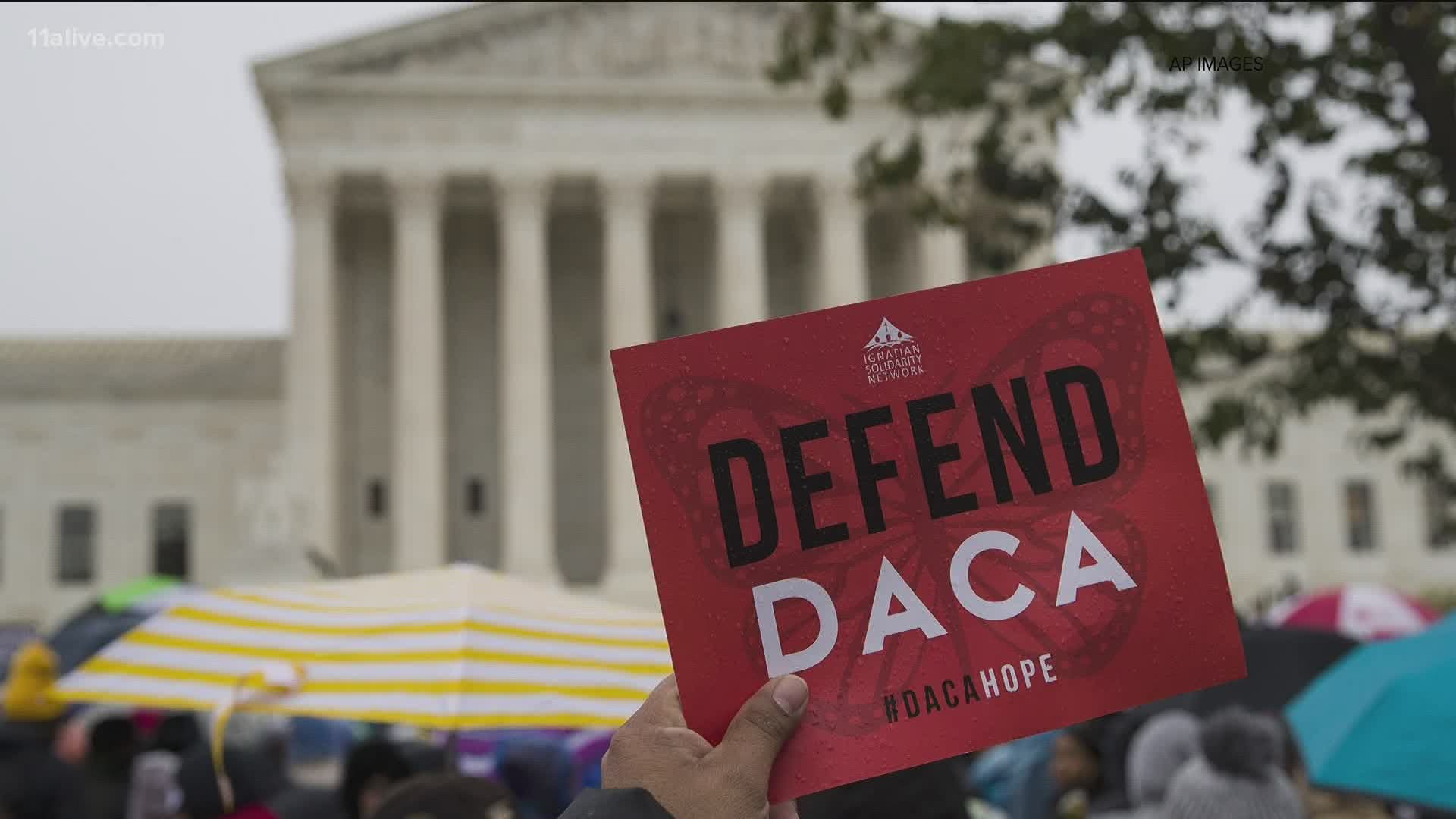The U.S. Supreme Court on Thursday upheld a program that protects hundreds of thousands of immigrants who were brought to the country as children and legally allows them to work in the U.S.
The court on Thursday ruled President Donald Trump didn't properly end the program, which then-President Barack Obama created in 2012. Trump attempted to end the Deferred Action for Childhood Arrivals program in 2017 shortly after being elected on a largely anti-immigrant platform.
Here are the answers to 10 of the most-searched questions people have been looking up on Thursday related to the program, according to Google Trends data.
What is DACA?
DACA allows immigrants who were brought to the U.S. as children and had grown up here to legally work and shields them from deportation. But it was limited to only those who met certain requirements.
What does DACA stand for?
Deferred Action for Childhood Arrivals
Who are the Dreamers?
Dreamers are considered to be those who were brought to the U.S. by their parents as children and had grown up here. The name comes from the D.R.E.A.M. Act, which was failed legislation proposed during the Obama administration that would have granted these individuals a pathway to citizenship.
What does DACA provide?
DACA allows these young immigrants an opportunity to legally work in the U.S. and it shields them from deportation.
Can DACA recipients become citizens?
There have been many efforts to pass legislation that would provide legal status and a path to citizenship for Dreamers, but even bipartisan plans have fallen flat. After Trump tried to end the program in 2017, he gave Congress six months to come up with a solution. They didn't. Democrats now hold the majority in the House. But the Senate is controlled by Republicans, meaning any legislation would face a steep uphill battle and would need to be truly bipartisan for it to have any chance of passing Congress.
Who qualified for the DACA program?
In order to qualify, an applicant had to be between 15 and 30 years old and needed to be enrolled in high school, have a G.E.D., diploma or have served in the U.S. military. Those with a felony or serious misdemeanor on their record are not eligible for the program. The fee to apply and renew is nearly $500.
How many DACA recipients are there?
Currently, there are approximately 650,000 people who are enrolled in the program. At its height, the program had nearly 800,000 people.
How did the Supreme Court vote on DACA?
In a 5-4 ruling liberal justices Ruth Bader Ginsburg, Sonia Sotomayor, Stephen Breyer and Elena Kagan were joined by conservative Chief Justice John Roberts to reject the Trump administration's efforts to end legal protections for this group of immigrants.
Three conservative justices including Clarence Thomas, Neil Gorsuch and Samuel Alito dissented writing that the DACA program was illegal from it's inception in 2012. Justice Brett Kavanaugh, one of Trump's appointees, wrote a separate dissent that he thought the administration acted appropriately.
Why did Trump want to end DACA?
The administration argued the program was illegal when Obama created it and that although he didn’t favor punishing children for the actions of their parents, “we must also recognize that we are nation of opportunity because we are a nation of laws.”
What's next for the program?
On Thursday, the U.S. Supreme Court said that while Trump could end the program, he did so improperly. That means the administration can now try to terminate the program in a different way if they choose to do so. Experts say that's not likely to happen before the November election in part because DACA has wide, bipartisan support among the American public.
The Supreme Court’s decision to keep DACA intact means the 650,000 people who are enrolled will keep their protections for now, which last two years. But the program hasn’t accepted any new applicants in a couple of years, and it’s unclear whether people who would have qualified for the program but couldn't apply after Trump announced he was rescinding it will now be able to apply.



